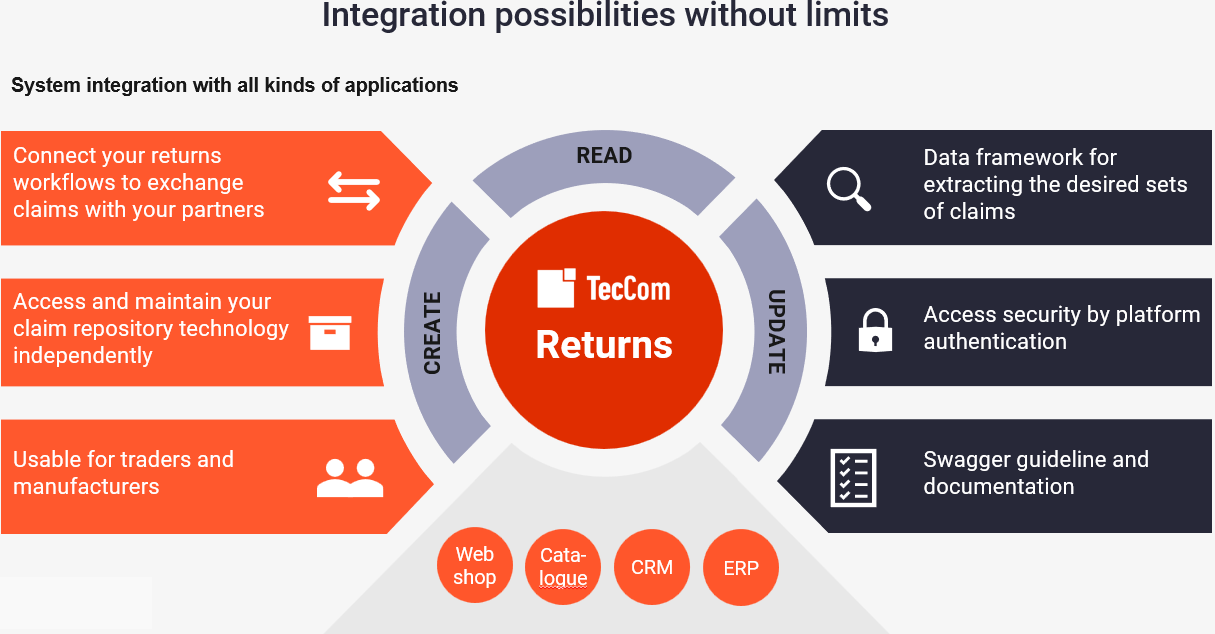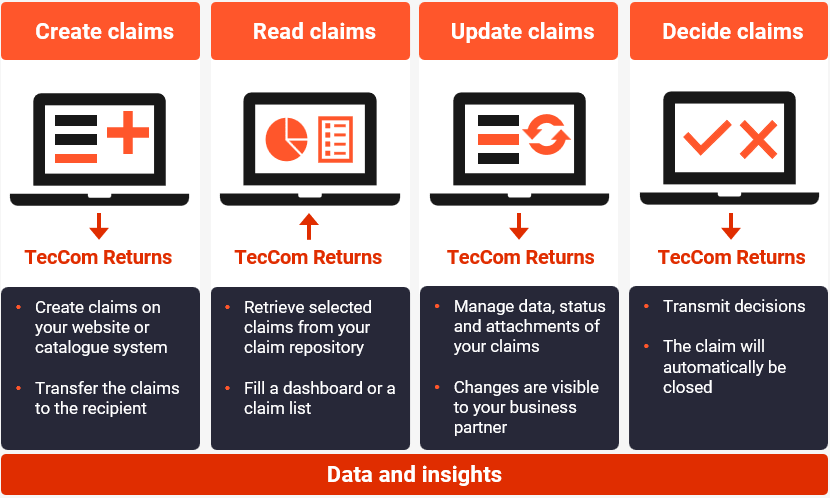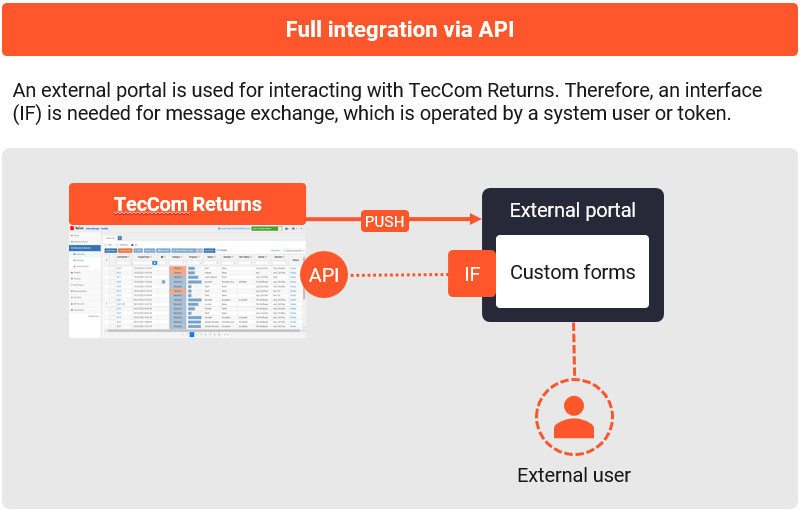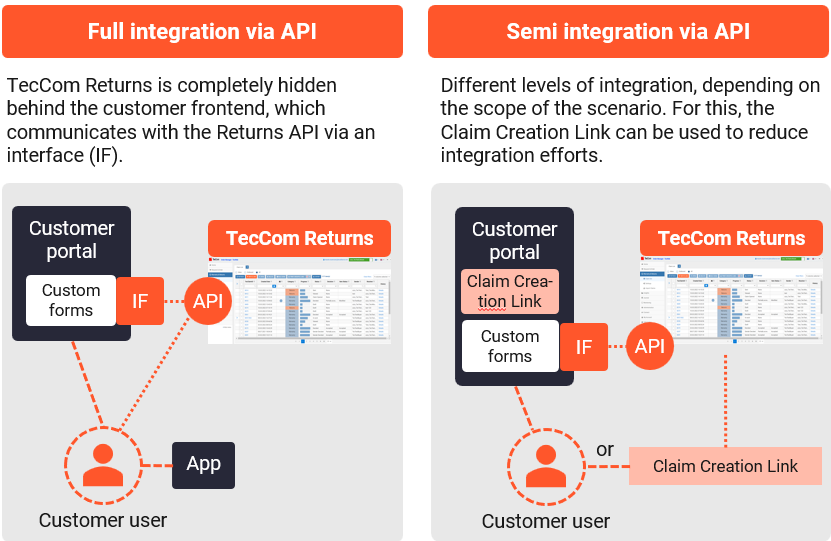Integration possibilities of Returns via API
This article outlines the integration capabilities of the Returns solution with external systems. It also describes the usage of the Returns SDK to integrate Returns via API methods. External systems can be web shops, catalogue systems, CRM or ERP systems, as illustrated below:

In most cases, external systems interact with Returns through API calls. In this setup, Returns functions as a remote-controlled platform, allowing external systems to send data and retrieve information. This centralized model enables you to manage and consolidate your entire returns and claims process efficiently. Plus, it provides a central view of all returns-related information to identify global trends, drive efficiency, and optimize production based on your data.
The diagram below illustrates how the Returns API can act as your central hub for all claims - your Returns Hub:

The Returns API is designed for both senders and receivers of claims. Here are some scenarios of possible integration via Returns API:
- Scenario of integration for claim receiver role e.g. manufacturers:

The illustrated PUSH process is an optional functionality, which allows updating the external system faster.
- Two integration scenarios for claim sender role, e.g. distributors:

In principle, the external system sends a request to the Returns API, which in turn gives a synchronous response back to the calling system. The Returns API supports the same use cases that can be fulfilled via the Returns website.
Returns API Integration SDK:
Below you can download the Returns API Integration SDK. The file contains a complete and extensive Postman collection to help you figure out and try all possible scenarios and use cases that our public API offers to better fit your needs. As a prerequisite to use the Returns API, the requesting systems needs to be authenticated.
You can download the Returns SDK for API with this link.
In addition to the SDK, we recommend exploring our Swagger UI link in which you can find our API definition, requests examples and possible error code returned in each endpoint.
Open API Changelog:
Stay up to date with the latest changes in our Returns Public API. This includes newly introduced features, bug fixes, deprecations, and version updates.
The changelog provides clear version tracking and important notes for integrators to maintain compatibility across updates.